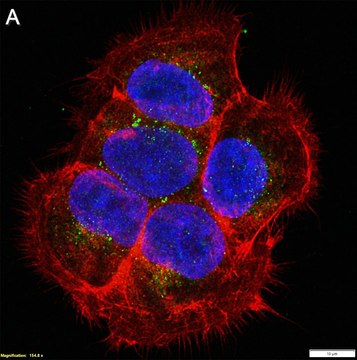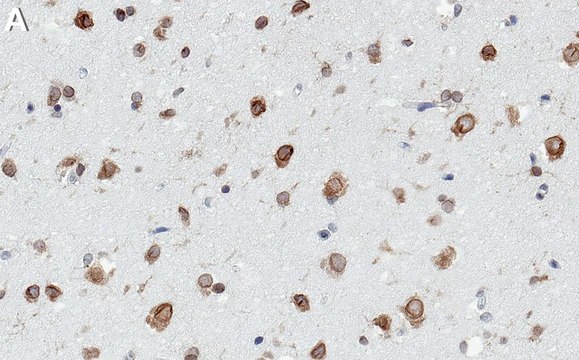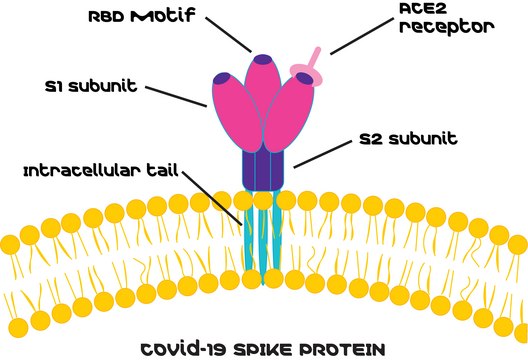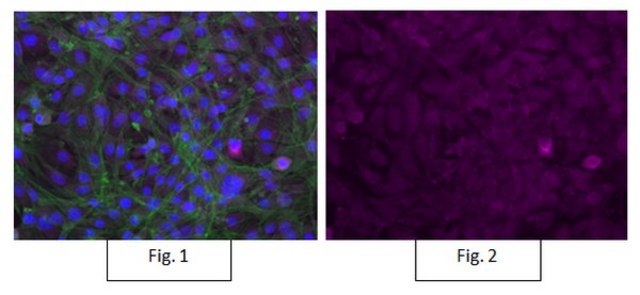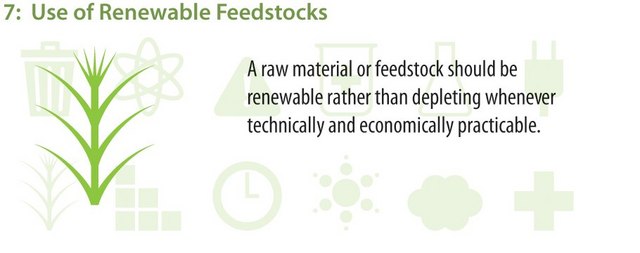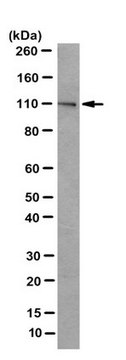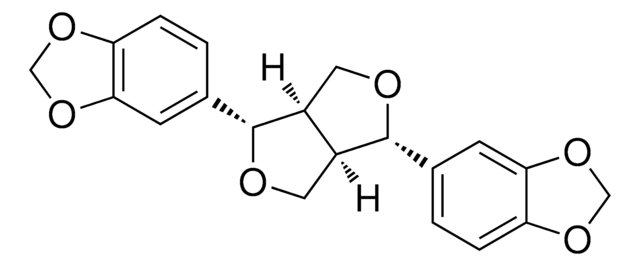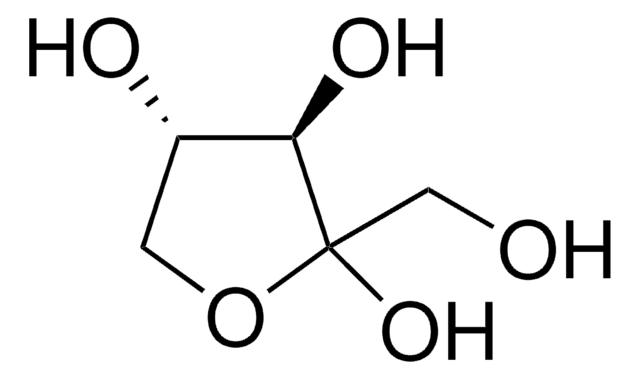General description
We are committed to bringing you greener alternative products, which adhere to one or more of The 12 Principles of Green Chemistry.This antibody is Preservative-free, produced without the harm or sacrifice of animals and exceptionally stable to allow for ambient shipping and storage if needed and thus aligns with "Waste Prevention", "Designing Safer Chemicals" and "Design for Energy Efficiency".
Click here for more information.
ZooMAb® antibodies represent an entirely new generation of recombinant monoclonal antibodies.Each ZooMAb® antibody is manufactured using our proprietary recombinant expression system, purified to homogeneity, and precisely dispensed to produce robust and highly reproducible lot-to-lot consistency. Only top-performing clones are released for use by researchers. Each antibody is validated for high specificity and affinity across multiple applications, including its most commonly used application. ZooMAb® antibodies are reliably available and ready to ship when you need them.
Specificity
Clone 227 is a ZooMAb® Mouse recombinant monoclonal antibody that specifically detects X Protein of Hepatitis B virus. It targets an epitope within 26 amino acids from the C-terminal half.
Immunogen
A linear peptide corresponding to 26 amino acids from the C-terminal half of X Protein of Hepatitis B virus (HBV).
Application
Quality Control Testing
Evaluated by Western Blotting with recombinant Protein X from HBV-271.]
Western Blotting Analysis (WB): A 1:20,000 dilution of this antibody detected recombinant X-Protein of HBV-271.
Tested Applications
Affinity Binding Assay: A representative lot of this antibody bound HBV X-Protein with a KD of 7.0 x 10-9 in an affinity binding assay.
Enzyme Immunoassay Analysis (ELISA): A representative lot of this antibody detected recombinant X-protein of Hepatitis B virus (HBV) in ELISA applications
Note: Actual optimal working dilutions must be determined by end user as specimens, and experimental conditions may vary with the end user
Target description
Protein X (UniProt: P69713; also known as HBx, Peptide X, pX) is encoded by the X gene (Gene ID: 944566) in Hepatitis B virus. Hepatitis B virus (HBV) contains seven main proteins, which include Core, pre-Core, Small S, Middle S, Large S, Polymerase, and the HBx protein. HBx, a multifunctional protein, although not essential for HBV infection, plays a role in silencing host antiviral defenses and promoting viral transcription. It facilitates the efficient replication of HBV by stimulating HBV gene expression from the cDNA template. It is mainly localized in the cytoplasm with a small fraction detected in the nucleus. However, its expression level can also influence its cellular localization. It is predominantly nuclear when expressed in cells at very low levels but becomes largely cytoplasmic as its expression level increases. In cytoplasm, a minor fraction may also associate with mitochondria. Its mitochondrial targeting sequence is localized in amino acids 68-117. HBx has an N-terminal negative regulatory domain and its transactivation or coactivation of the C-terminal domain is reported to interfere with host cell signal transduction transduction pathways to help HBV replication. The best-characterized HBx binding partner is the cellular damage-specific DNA binding protein 1 (DDB1) and the interaction of HBx-DDB1 is essential for HBV replication. HBx promotes the degradation of the cellular structural maintenance of chromosomes 5/6 complex (Smc5/6), which directly binds DNA and entraps DNA plasmids. HBx is directly involved in development of cirrhosis and liver and hepatocellular carcinoma. This ZooMAbZooMAb® recombinant monoclonal antibody, generated by our propriety technology, offers significantly enhanced specificity, affinity, reproducibility, and stability over conventional monoclonals. (Ref.: Kornyeyev, D., et al. (2019). J. Virol. 93(16); e00248-19; Hwang, G-Y., et al. (2003). J. Clin. Microbiol. 41(12); 5598-5603).
Physical form
Purified recombinant mouse monoclonal antibody IgG, lyophilized in PBS, 5% Trehalose, normal appearance a coarse or translucent resin. The PBS/trehalose components in the ZooMAb formulation can have the appearance of a semi-solid (bead like gel) after lyophilization. This is a normal phenomenon. Please follow the recommended reconstitution procedure in the data sheet to dissolve the semi-solid, bead-like, gel-appearing material. The resulting antibody solution is completely stable and functional as proven by full functional testing. Contains no biocide or preservatives, such as azide, or any animal by-products. Larger pack sizes provided as multiples of 25 μL.
Reconstitution
300 μg/mL after reconstitution at 25 μL per vial. Please refer to guidance on suggested starting dilutions and/or titers per application and sample type.
Storage and Stability
Recommend storage of lyophilized product at 2-8°C; Before reconstitution, micro-centrifuge vials briefly to spin down material to bottom of the vial; Reconstitute each vial by adding 25 μL of filtered lab grade water or PBS; Reconstituted antibodies can be stored at 2-8°C, or -20°C for long term storage. Avoid repeated freeze-thaws.
Legal Information
ZooMAb is a registered trademark of Merck KGaA, Darmstadt, Germany
Disclaimer
Unless otherwise stated in our catalog or other company documentation accompanying the product(s), our products are intended for research use only and are not to be used for any other purpose, which includes but is not limited to, unauthorized commercial uses, in vitro diagnostic uses, ex vivo or in vivo therapeutic uses or any type of consumption or application to humans or animals.

